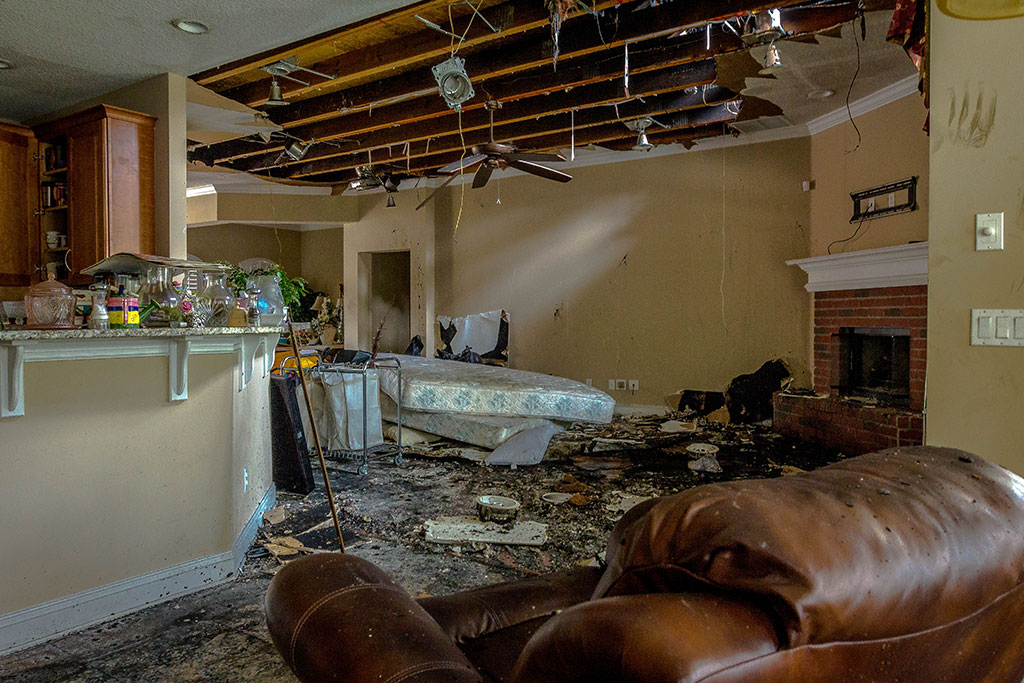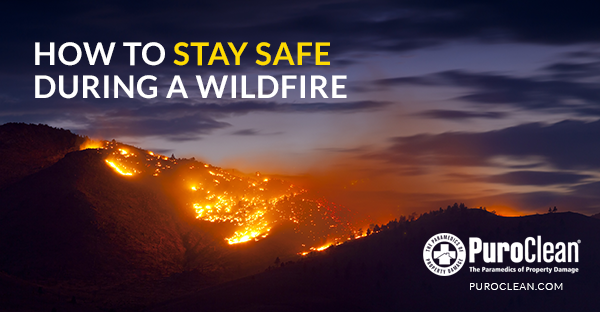House fires can be emotionally and psychologically devastating. The damage caused by fires takes a toll on the victims and that is why industry professionals should always exude sensitivity and understanding during this difficult time without sacrificing completion of the job.
After there has been fire damage to a property, it is critical for restoration professionals to address the disaster in full and from start to finish. There are a number of critical elements in the process that require special
attention to ensure that the remediation has been adequately performed. For some of you, this article may be nothing more than an important review, however, the steps outlined will educate and help guide industry professionals regarding the approach to take and the proper execution of mitigating fire damage:
Receiving the Homeowner’s Call
During this time, triage the situation to determine the order of priorities and attention needed. This is a critical time for gathering information to ensure the damage is properly assessed and estimated.
The initial conversation can begin along the lines of: “Thank you for choosing to call us. We understand your property has experienced fire damage. I’d like to ask you a few questions that will help us assess the situation and efficiently remediate.” Here are a series of questions to ask that will help the professional determine the severity of damage to the property.
When did the fire occur?
What was the cause of the fire?
Did the fire penetrate through the house?
Is there soot and fallout in your home?
Have you or anyone else made an attempt to clean up some of the damage?
Through this series of questions, the professional should be qualifying the job – its size, the soot and its type, and the customer’s immediate need. These are aspects of the property damage that will tell the restoration/mitigation professional what to expect and the how to quickly and professionally prepare to
neutralize and remove the compounds from the home.
Understand that smoke is unburned hydrocarbons that deposit on ceilings and horizontals, and usually 70% hits horizontals and 30% deposits on walls and ceilings. Considering this, the professional should ask what type of fire took place and explain to the property owner that there are three basic types of fires. These include petroleum fires, which ignite from flammable liquids and gases, common combustible fires deriving from wood, paper or cotton, and protein fires, which emerge from cooking media such as oils, fats and meat.
Each fire produces different residues. To illustrate, a petroleum fire’s compound is quite sticky and smudgy, while a common combustible fire’s deposit tends to be drier. Protein fires, on the other hand, produce smoke that smells foul and is yellow in nature. Each of these fire emergencies will require specific strategies to effectively alleviate the damage.
If at the end of the call, the homeowner feels the need to cleanup, the professional should inform them of what materials or items they can use that will not create further damage, or more importantly, cause them injury. The customer can clean fixtures, countertops, sinks, faucets, toiletries, showers and anything that can be washed by everyday cleaners. Cabinets, however, are not included in the list of items property owners can safely disinfect on their own, because many cabinets are made of wood – a porous material requiring specific cleaning agents. Lastly, the property owner can pre-vacuum their carpets prior to the remediation/mitigation company’s arrival, if they so choose.
Traveling to the Site to Inspect and Pre-test
Prior to arrival, professionals should ensure they have a spotting kit and the appropriate industry standard
paperwork to discuss the severity of the damage and expectations with the property owner. Upon arrival, it will be necessary to inspect the damage with the homeowner and perform pre-testing. The pre-testing will show the homeowner the professional’s capabilities and expertise, which helps put them at ease, making them feel that they are in the right hands.
Ask the homeowner to explain what they see and allow them to voice their concerns.
After inspection, sit down with the customer and go over the required paperwork they will need to fill
out.
– The customer information form.
– The authorization for the remediation/mitigation company to perform their services.
– The fire damage information form, which outlines the time the fire remediation job will begin, the do’s and don’ts, and specifics highlighting the cleaning agents the company’s team will be using. The form addresses and identifies the customer’s jewelry, firearms, important family documents, heirlooms, etc., and alerts the mitigation team of items that cannot be destroyed, lost, or tampered with.
– Material safety data sheets.
Scoping and Estimating the Job
Before completing a work order, the mitigation company’s team must confirm with the homeowner that they can do the inspection once more, but this time around to scope the property. The best way to collect the scope of a job is on pre-printed industry standard forms that assess the remediation. It is best to arrive with a few
copies so that everything is ready to go.
Once the scope has been completed, the professionals should explain what has been found in the house and what they believe needs to be done to mitigate. Keep in mind, the scoping document will later serve as the estimate. Before scheduling the work, the professional should ensure all documents have been read and signed by the customer. Additionally, this is a good time to verify if the property owner has coverage by contacting the adjuster; however, it is important to be cautious of scaring the customer away too early in the process.
After the professional has completed the site visit, they can call the adjuster, inform them of their findings, what the expected costs are, and provide them with a likely date for an estimate.
Activating the Work Order
Imagine that the work has been scheduled to take place in a 4-to-5 day span with a crew of six people. Looking at the completed scope, which also serves as an estimate, the professional can now consider the document to also serve as a work order. The work order should be initialed by the employee who performs the service, whether it is wall-washing, window-washing or a different task.
If the homeowner is available at the end of the day’s work, the professional should have the homeowner verify that the services were performed to their satisfaction and confirm the quality and consistency of the work by signing off on the document. It is imperative to communicate everything to the adjuster in case there are any questions on the estimate.
After the Job
Upon completion, the professional should walk through the home and ensure the job and services have been performed to the homeowner’s service expectations. The customer should verify everything by reviewing the days of service and initialing on the space provided on the sheet for each day. The certificate of satisfaction should be signed, which tells the insurance company and the homeowner that everything has been completed. Thereafter, the homeowner needs to receive their copy from a three-part form, one for each of the following: restoration vendor, homeowner, the insurance company/source paying the bill.
Reviewing with the Adjuster
The professional should send a notice to the adjuster alerting them that the certificate of satisfaction has been completed. At this time, communicate to the adjuster any special concerns the homeowner might have with the company’s service and/or any pre-existing conditions in the home.
Advising of Payment Date
At this point, it is the ideal time to communicate with and mail an invoice to the customer, asking when the payment could take place for proactive collection, and what the best time would be for a follow up on the payment.
Writing a Thank You Note
Within one week of the job’s completion, the professional should send a thank you card to the customer, gaining reaffirmation of the customer’s happiness with the service.
House fires are one of the most devastating disasters that can happen to a homeowner and experts should be considerate of that fact when beginning the process of restoration/mitigation. By following the above processes and ensuring that everything is handled properly from start to finish, professionals can eliminate and reduce the stress on homeowners during this difficult time.




 PuroClean Disaster Services - Wood Dale
PuroClean Disaster Services - Wood Dale